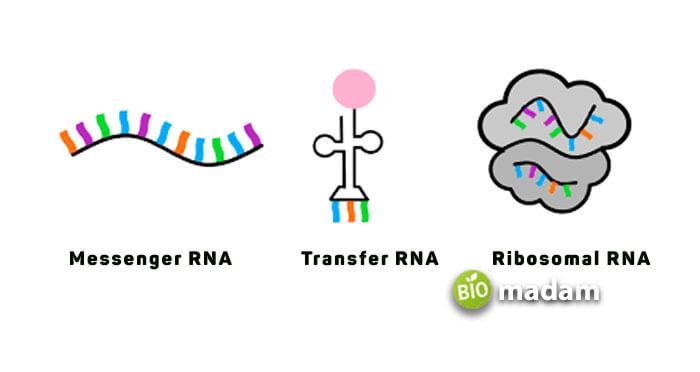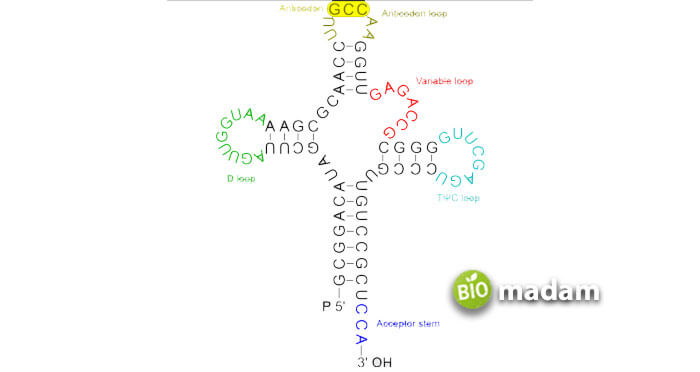An essential biological macromolecule and part of every cell inside the body, ribonucleic acid in general called RNA, is one of the crucial components of cells and the body.
RNA structure is made up of ribonucleotides linked together by phosphodiester bonds. It is a single-stranded molecule and contains ribose, a phosphate group, and either purines or cytosine as pyrimidine and one of the four nitrogenous bases from adenine (A), uracil (U), Guanine (G), and Cytosine (C).
RNA plays an integral part in performing short-term functions and helps DNA function properly. In this article, we will learn about RNA structure and function and the different types of RNA, their structures, and operations, and understand how the different types of RNA are essential for the proper functioning of the body.
What is RNA?
RNA is quite similar to DNA, but it can still differ in its structure and functions. RNA helps perform various tasks inside the cells and is equally responsible for proper body functioning.
The primary function of RNA is the synthesis of different types of proteins.
Proteins are multitaskers inside the body, and hence for proper protein synthesis, there are different types of RNA, each responsible for a unique set of tasks.
Three Main Types of RNA

There are different types of RNA, classified based on their duty inside the body. However, there are three major types of RNA and their functions, each responsible for a specific activity during protein synthesis. Let’s find out about each type of RNA in detail:
Messenger RNA

Messenger RNA, also called mRNA, is coding-RNA responsible for carrying the genetic code so that they can help make proteins from DNA. The coding sequence of mRNA, the way it takes genetic code from DNA, defines the sequence of amino acids in the protein.
mRNA lives for a short time inside the cell, especially in prokaryotic cells, and is relatively unstable. This characteristic of mRNA to live shortly helps in the formation of protein only when required.
When a cell requires a specific type of protein to be synthesized, the function of mRNA starts. Through the transcription process, mRNA is synthesized, and the gene of that product is turned on.
Roughly there are 23,000 mRNA inside a human body, helping carry the genetic instructions from the nucleus in the cytoplasm to the ribosome.
Transfer RNA

Transfer RNA, also called tRNA, is a stable RNA. It consists of 80 nucleotides, forming a small chain of RNA. During the translation process, the function of tRNA is to bring the correct amino acid to the ribosome.
tRNA is also an essential type of RNA that carries an mRNA binding site and also amino acid binding site. It consists of extensive intramolecular base pairing and is responsible for the correct synthesis of proteins.
Being a decoder of messenger RNA during protein synthesis, tRNA works in specific positions in a ribosome during translation and helps mRNA perform its job efficiently. It also helps add amino acids to a growing peptide chain smoothly and thus is an integral part of the translation process.
Ribosomal RNA

Ribosomal RNA, also called rRNA, is a stable type of RNA holding an integral part during protein synthesis. This RNA is a significant part of ribosomes and is responsible for 60% of ribosomes.
rRNA function is to provide a location to the mRNA where it binds. This type of RNA is responsible for the proper alignment of mRNA, tRNA, and ribosomes during the translation process.
Ribosomal RNA consists of peptidyl transferase and boosts the formation of peptide bonds formed between the two amino acids during protein synthesis.
rRNA is essential for proper structuring during protein synthesis, but its catalyst nature has proven to help the translation process occur smoothly and at a fast rate.
rRNA and protein combine inside the cytoplasm to form a ribosome, a nucleoprotein complex, and an essential part of the protein synthesis process.
Conclusion
By the end of this article, I hope you have learned in detail what RNA is and what its types are. I have tried to keep it simple to clear your concept more quickly and accurately.
mRNA, tRNA, and rRNA are equally crucial for protein synthesis and proper body functioning. The translation process can not happen without any type of RNA, indicating how vital these components are.
There are other types of RNA, such as small nuclear RNA, small nucleolar RNA, piwi-interacting RNA, micro RNA, long-noncoding RNA, etc. all of these are non-coding RNA and are assigned a specific task to be carried out inside the body.

Anna has completed her degree in Pharmacy from the University of Hawaii. She is serving as a research assistant in a pharmaceutical company. She had a great interest in writing blogs, traveling to different parts of the US, and trying delicious recipes in her spare time.

